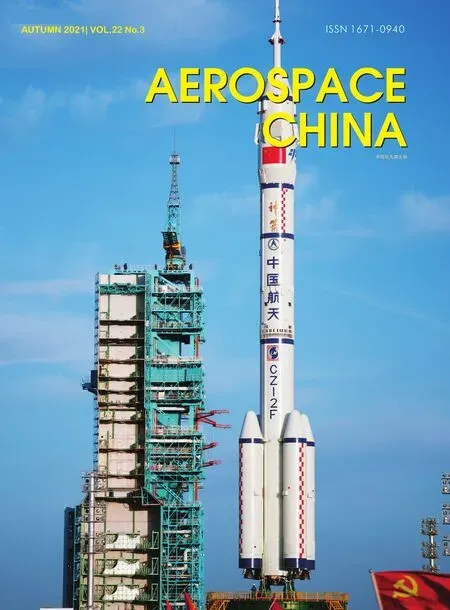Acoustic and Vibration Environment Prediction Technology of Instrument Cabin Based on Multi-Source Data
QIN Zhaohong,REN Fang,RONG Kelin,ZHU Xiquan,WEI Long,YUAN Kai,ZHANG Zhong,FAN Bochao
1 Science and Technology on Reliability and Environment Engineering Laboratory,Beijing 100076
2 Beijing Institute of Structure and Environment Engineering,Beijing 100076
Abstract:Noise characteristic is one of the important factors to be considered during the design of a launch vehicle system.In this paper,the acceptance conditions for the external noise environment of the instrument cabin are given based on multi-source data,including the measured data of the launch vehicle lift-off noise,the mechanical environment of the launch vehicle equipment,and the external noise environment of the instrument cabin deduced from empirical formula.Then an acoustic and vibration transfer model is established based on the response data of the instrument equipment used to conduct measurements in the noise test reverberation room.By using an external noise environment and a transfer model,the response of the instrument and equipment for the acceptance condition can be obtained.The acoustic and vibration prediction technology introduced in this paper can provide technical support in the environmental prediction analysis of heavy launch vehicles for the future.
Key words:launch vehicle,acoustic and vibration environment,multi-source data,instrument cabin
1 INTRODUCTION
During the launch phase,the launch vehicle and spacecraft are exposed to complex and severe mechanical environments.The noise environment mainly comes from the jet noise produced by the strong gas flow expelled by the engine plus the aerodynamic noise induced by the turbulent layer acting on the spacecraft.
Noise characteristic is one of the important factors to be considered in the design of launch vehicle systems.During the lift-off phase of a large launch vehicle,the source of the jet noise from the rocket engine is limited and continuously reflected by the trench and launch pad,resulting in a severe noise environment.The maximum sound pressure level (SPL) for this kind of noise environment is about 170 dB.The jet noise intensity not only affects the performance of the equipment and the structure of the rocket,but also affects the normal use of the launching equipment and instruments.During the flight,the launch vehicle also suffers due to the very serious noise environment,especially when the flight dynamic pressure and Mach number are large,hence the total SPL of the noise is large,which directly affects the normal operation of the instruments on the launch vehicle.Structural vibration caused by the high-intensity sound field within the noise environment can cause failure of internal equipment,over stress and fatigue damage to the structure and equipment,and even a launch failure.
Reference [6]emphasizes the importance of the acoustic and vibration environments for spacecraft research,and summarizes NASA's new research achievements in the field of acoustic and vibration research.In reference [7],the lift-off noise environment of Areas I was obtained by using a scaling model.In reference [8],the experimental method of identifying the reverberation field using telemetry data is given through an experiment with high-intensity reverberation noise of a spacecraft.The research on a noise control system within a reverberation room and the improvement of acoustic performance further promotes researchers to simulate the flight environment of the spacecraft via reverberation chamber experiments.
The merits of various prediction methods for the external acoustic environment of spacecraft during lift-off are summarized in Table 1.The accuracy of various estimation methods is closely related to the initial estimate.If the acoustic measurement is carried out during the ignition time of the first test of the rocket engine,the accuracy of the prediction based on the combination of sound power and extrapolation method will be improved to a new level.Similarly,the accuracy of some prediction methods are related to the similarity of the test spacecraft and its launching equipment with the actual spacecraft.In these cases,the extrapolation method can be very accurate.Finally,two or more prediction methods are usually used together to enhance the reliability of the results,that is,sometimes during the first launch,direct measurements are made at one or several positions of the structure to verify the previous prediction.
Various methods for measuring the fluctuating pressure on the external surface of the spacecraft during flight and their respective merits are listed in Table 2.The initial prediction of the turbulent boundary layer pressure fluctuation can also be improved on the basis of actual flight data,but it requires expensive flight measurement equipment.The accuracy of the extrapolation method is greatly affected by the design of the new spacecraft and the similarity of the flight curve of the original spacecraft.
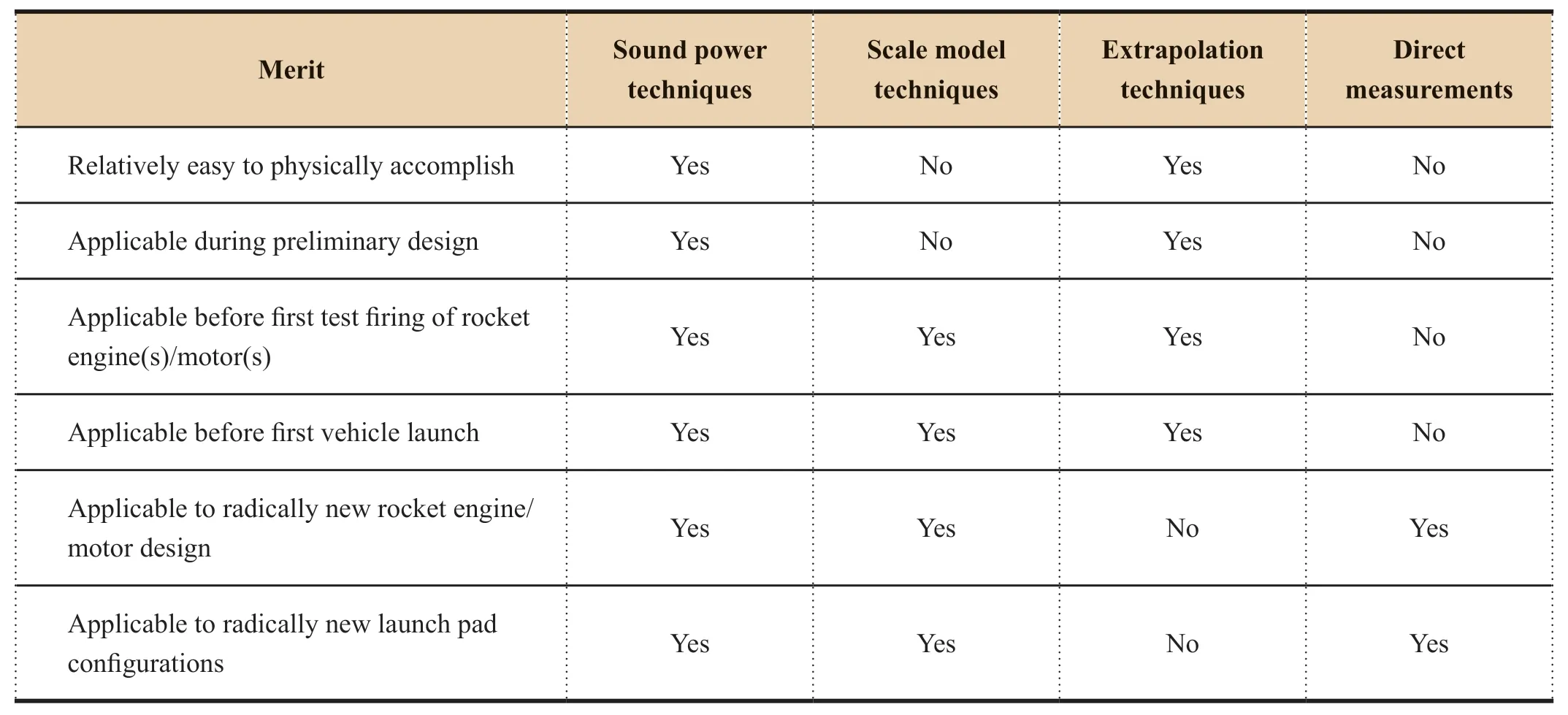
Table 1 Comparative merits of various methods for predicting lift-off acoustic excitations
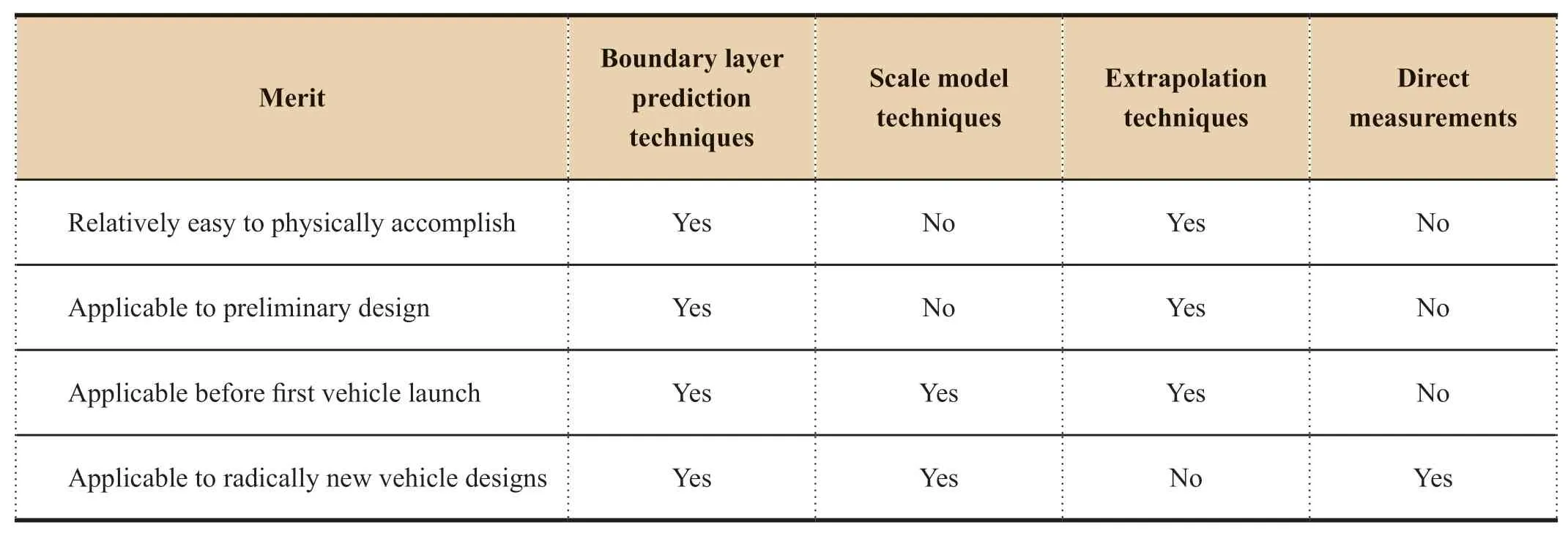
Table 2 Comparative merits of various procedures for predicting the fluctuating pressure
In this paper,a new launch vehicle is developed according to the concept of module combination.The state of the rocket core first stage is basically the same as that of the first stageof the existing launch vehicle,the state of the booster is the same as that of the existing rocket booster,and the state of the second stage of the core is basically the same as that of the third stage of the existing launch vehicle.Therefore,the similar extrapolation method can be used to predict the acoustic and vibration environments in the instrument cabin.
Hence,the acceptance conditions of the external noise environment of the new type of instrument cabin are given by using the multi-source data of the lift-off noise data of the existing launch vehicle,including the lift-off noise measured data from the launch vehicle,taking into account the mechanical environment of the launch vehicle equipment,and the external noise environment of the instrument cabin obtained by empirical formula.On this basis,combined with the vibration data of instruments and equipment in the reverberation room noise test of the instrument cabin,the response of the instruments and equipment under the acceptance conditions of the noise environment could be obtained.
2 EXTERNAL NOISE ENVIORNMENT OF INSTRUMENT CABIN
In this Chapter,the acceptance condition of the external noise environment of the instrument cabin is given in section 2.4 based on multi-source data,including the measured data of the launch vehicle lift-off noise,taking into account the mechanical environment of the launch vehicle equipment,and the external noise environment of the instrument cabin based on the empirical formula as shown in sections 2.1-2.3 respectively.
2.1 Environmental Prediction Based on Measured Data of Liftoff Noise
For the noise environment near the umbilical tower of the existing launch vehicle,the arrangement of measuring points is shown in Figure 1.
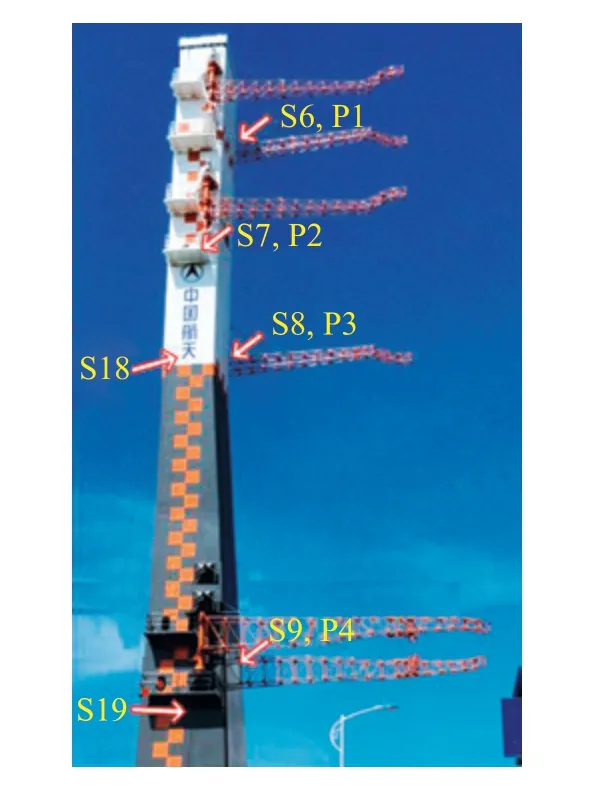
Figure 1 Schematic diagram of noise measuring points of umbilical tower during lift-off
S6 is located on the 15th floor of the umbilical tower,and the S6 transient SPL is obtained.Considering the maximum lift-off noise occurs at the 3 s point,where the sound pressure level is 145 dB.
The variation of the total sound pressure level of the engine noise along the height of the rocket body can be estimated by the following formula when the launch vehicle ignites and lifts off:

where
Z
——external noise at position L,unit:dB;Z
——noise at the end face of engine nozzle,unit:dB;B
——coefficient obtained by curve fitting of test data(B
=3.2);L
——height of noise prediction point,unit:m.According to the distance between S6 and engine nozzle at 3 s,Z
=163.5 dB can be deduced.Taking into account the distance between the instrument cabin and the engine nozzle,it can be further calculated that the sound pressure level at the instrument cabin of the existing launch vehicle is 144 dB.However,there are two differences between the new and the existing launch vehicle,there are different number of engines and different distance between engine nozzle and the instrument cabin.Therefore,it is necessary to consider these differences when estimating the external noise environment of the instrument cabin for the new launch vehicle:
1) Impact on the external noise environment of the instrument cabin caused by a different number of engines
The total SPL of the engineL
is as follows,
W
is the sound power.
The results show that the noise environment of the new launch vehicle is 1.76 dB lower than that of the existing launch vehicle.
2) Impact on the external noise environment of instrument cabin caused by different distance between the engine nozzle and the instrument cabin
For the new launch vehicle,the instrument cabin is closer to the engine nozzle than the existing instrument cabin.According to Equation (1),it can be calculated that the noise attenuation difference between the new and the existing launch vehicle is 0.7 dB from the nozzle of the first stage engine to the instrument cabin.
3) Considering the number of engines and the position of the instrument cabin,the noise environment of the new launch vehicle in the lift-off phase is reduced by I dB,that is 143 dB,compared with the existing instrument cabin
Method 1:The acceptance condition is the highest expected environmental spectrum value.According to the assumption of log-normal distribution,it means that the value will not be exceeded with 50% confidence (P95/50) in flight with at least 95% probability.According to the nonparametric upper bound estimation,the acceptance condition is regarded as the maximum envelope of the environmental measurement results.
The acceptance test is carried out according to the highest expected value determined by P95/50.Assuming that the variation between flights is a log-normal distribution,the estimated value of percentile probability underP
(percentile probability)andC
(percentile position reliability) is calculated as follows:
where
E
——estimated spectral value underP
andC
;X
——logarithmic mean value obtained from N independent samples (different flight or ground tests);σ——standard deviation in dB for X.The standard deviation of 3.5 is assumed for log-normal distribution;ZP
andZ
——standardized normal variables not exceedingP
andC
.For most cases required by the standard,theZ
corresponding to 50% confidence is 0,and theZP
corresponding to the 95 probability is 1.645.Substituting the above data into Equation (3),thenE
(95/50) is:
The external noise environment acceptance condition of the new launch vehicle instrument cabin required was 6 dB higher than the environmental condition,that is,149 dB.At the same time,considering the influence of uncertainty factors,a 3 dB margin was added when making condition.Hence,the final acceptance condition of external noise of instrument cabin needed to be 152 dB.
Method 2:Based on the measurement results of the external noise data of the existing rocket flight umbilical tower,the noise environment of the extrapolated instrument cabin could be deduced.As there were few flight samples,the noise environment was increased by 3.5 — 6 dB according to the standard extrapolation.At the same time,considering the influence of the uncertainty of the theoretical extrapolation formula,it is suggested to add 3 dB design margin when establishing the acoustic condition.
Therefore,it was predicted that the external environment condition of the new launch vehicle instrument cabin would be 149.5 — 152 dB.
2.2 Mechanical Environment of Equipments in the Launch Vehicle
Based on the mechanical environment of the existing launch vehicle,the noise spectrum covers that of jet noise from the engine and the aero acoustic.Table 3 shows the maximum noise pressure level inside the instrument cabin in different frequency bands during the processes of lift-off and transonic flight,and the total SPL is 142 dB.Based on the data obtained from the noise experiments in the reverberation chamber,the noise pressure level inside the instrument cabin can be seen to be about 10 dB less than outside.Thus it is indicated that the SPL outside the instrument cabin would be about 152 dB during initial flight.
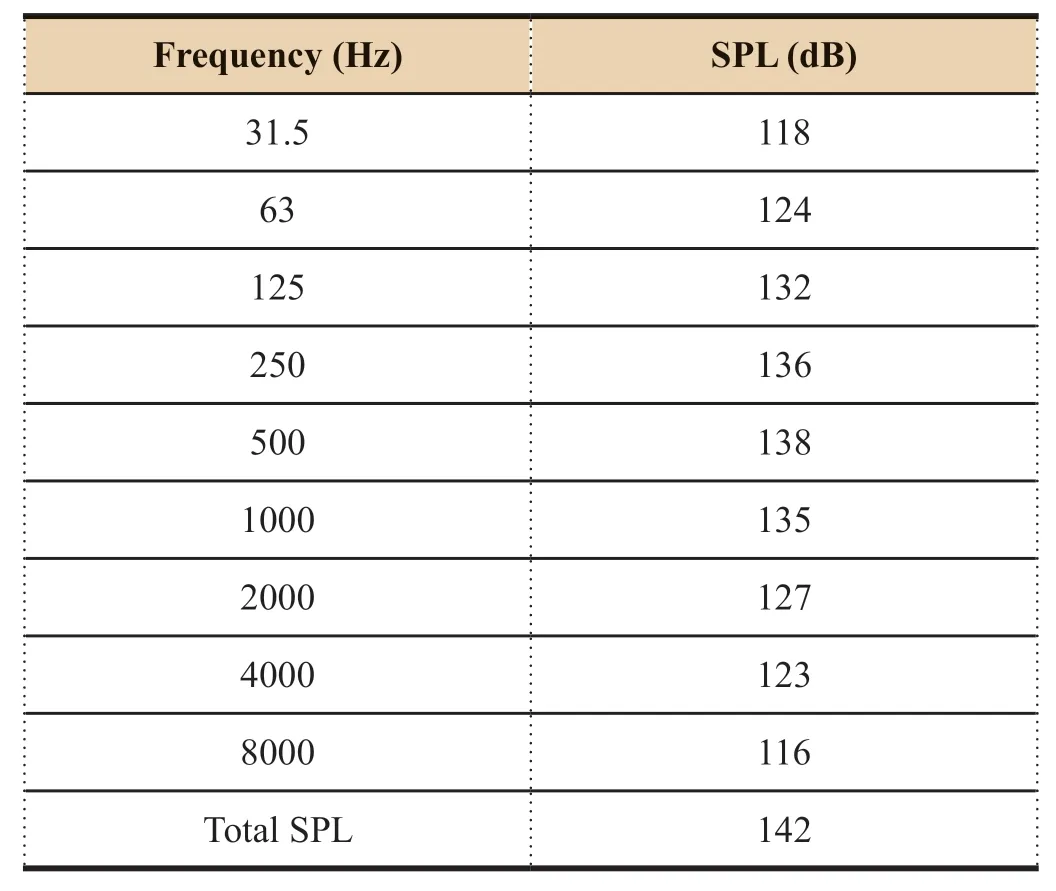
Table 3 The interior noise condition for the instrument cabin
2.3 Prediction of the Noise Environment Outside the Instrument Chamber Based on Experimental Data
Based on the thrust of the rocket engine and jet velocity,the total SPL was computed as:

V
is the jet velocity of the engine,F
isthe thrust,and
η
is the acoustic efficiency of the engine.In Equation (6),the SPL curve of the liquid rocket engine can be suitably normalized if the Strouhal number is used to normalize the frequency as shown in Figure 2.
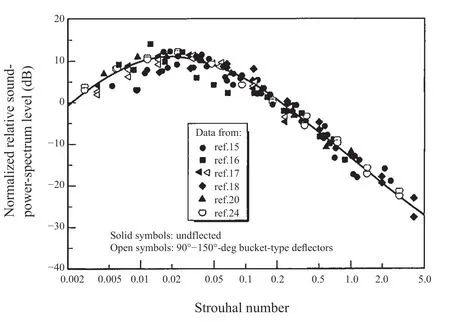
Figure 2 The normalized curve of the SPL

W
(f
) is the SPL at the central frequency,W
is the total SPL of the engine,andD
is the diameter of the section where the nozzle exit of the engine is located.After obtaining the normalized curve of the SPL,the SPL at each frequency band is computed as:
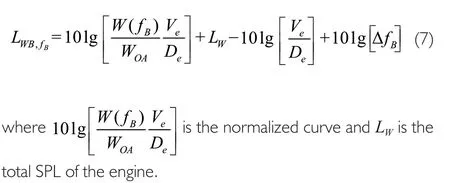
The relation between each one-third octave band and the central frequency of that is:

Then based on Equation (8),the sound pressure at any point in space can be expressed as:

R
is the distance between any single point and the sound source,DI
(φ
,f
) is called the direction parameter in the angleφ
between the jet direction and the direction from the nozzle exit and any single point at the central frequencyf
.The direction parameterDI
(φ
,f
) can be obtained in Figure 3.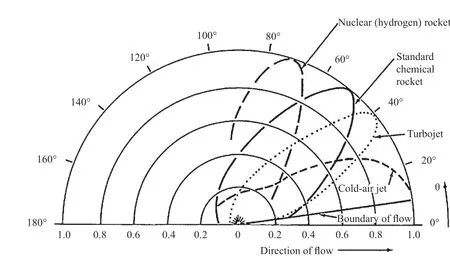
Figure 3 The direction parameters in different angles
The program was designed based on Equation (9) to compute the noise pressure level of the jet noise in different positions.
In the model of the free jet,the noise pressure level outside the instrument cabin is computed as shown in Table 4.

Table 4 The prediction result of the noise for free jet
The noise test of the new launch vehicle has two states.In the first one,there is no boundary besides the free jet and in the second one,besides the jet,the trench,launch pad and tower are also set.Those two states were both computed,compared and a 6 dB increment was found when the trench,launch pad and tower are included.
Based on the NASA spacecraft design handbook (NASA-SP-072) reference,the difference between the SPL of the free jet and that with boundary effect is 6 dB for the exterior instrument cabin.
In the lift-off process,the trench,launch pad and tower will lead to a boundary effect,which influences the jet noise environment and it can lead to about a 6 dB increment of the SPL.Therefore,considering the boundary effect,the external noise environment of the instrument cabin is increased by 6 dB.
Based on the rule P95/50,the environmental acceptance condition of external noise,so for the instrument cabin it is 6 dB higher than the environmental condition under method 1,that is,149.1 dB.At the same time considering the uncertain factors of the theoretical extrapolation,it was suggested to add a design allowance of 3 dB when estimating the noise environment condition,hence the final noise environment condition at the instrument cabin for the new launch vehicle is 152.1 dB.
Under method 2 the SPL of the extrapolated noise environment should be increased by 3.5 — 6 dB according to the standard,considering that there are fewer noise samples.Similarly,considering the uncertainty of the theoretical extrapolated formula,it was suggested to add a design allowance of 3 dB when estimating the noise environment.Therefore,we can assume that for the final noise environment condition the SPL of the external noise at the instrument cabin is 149.6 — 152.1 dB.
2.4 Analysis of the External Noise Environment for the Instrument Cabin
The noise environment for the instrument cabin mainly includes the noise environment due to the lift-off jet flow and the transonic aerodynamic noise environment.The high frequency vibration response excited by noise decays faster when it transfers to the equipment,thus the noise and the vibration caused by the aerodynamic noise has a smaller influence on the equipment inside the instrument cabin.Moreover the noise environment of the lift-off jet is more significant than that of the transonic aerodynamic based on the previous data of actual launch vehicle models.Therefore,the jet noise environment experienced during the lift-off stage is the main contributor to the noise environment for the instrument cabin.
We see the lift-off noise at the instrument cabin obtained from the measured data of the existing launch vehicle is 152 dB.According to the interior noise conditions for the existing instrument cabin,in Section 2.2,the SPL at the instrument cabin of the new launch vehicle is 152 dB.While,the noise pressure level outside the instrument cabin is 152.1 dB based on the empirical formula in Section 2.3.
Based on all the above data sources,the external noise environment condition at the instrument cabin for the new type of launch vehicle was set as 152 dB,which is the SPL outside the instrument cabin.The external noise environment condition of the instrument cabin is shown in Figure 4 and Table 5.
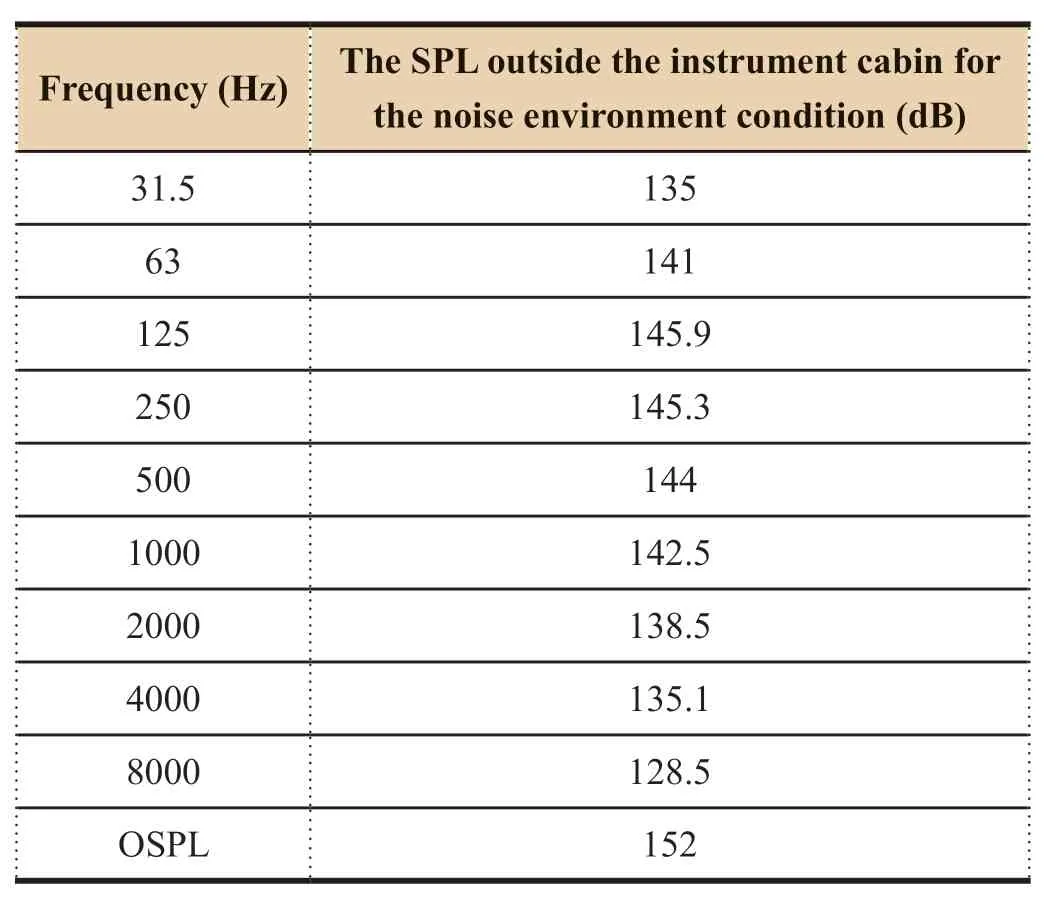
Table 5 The external noise environment condition for the instrument cabin
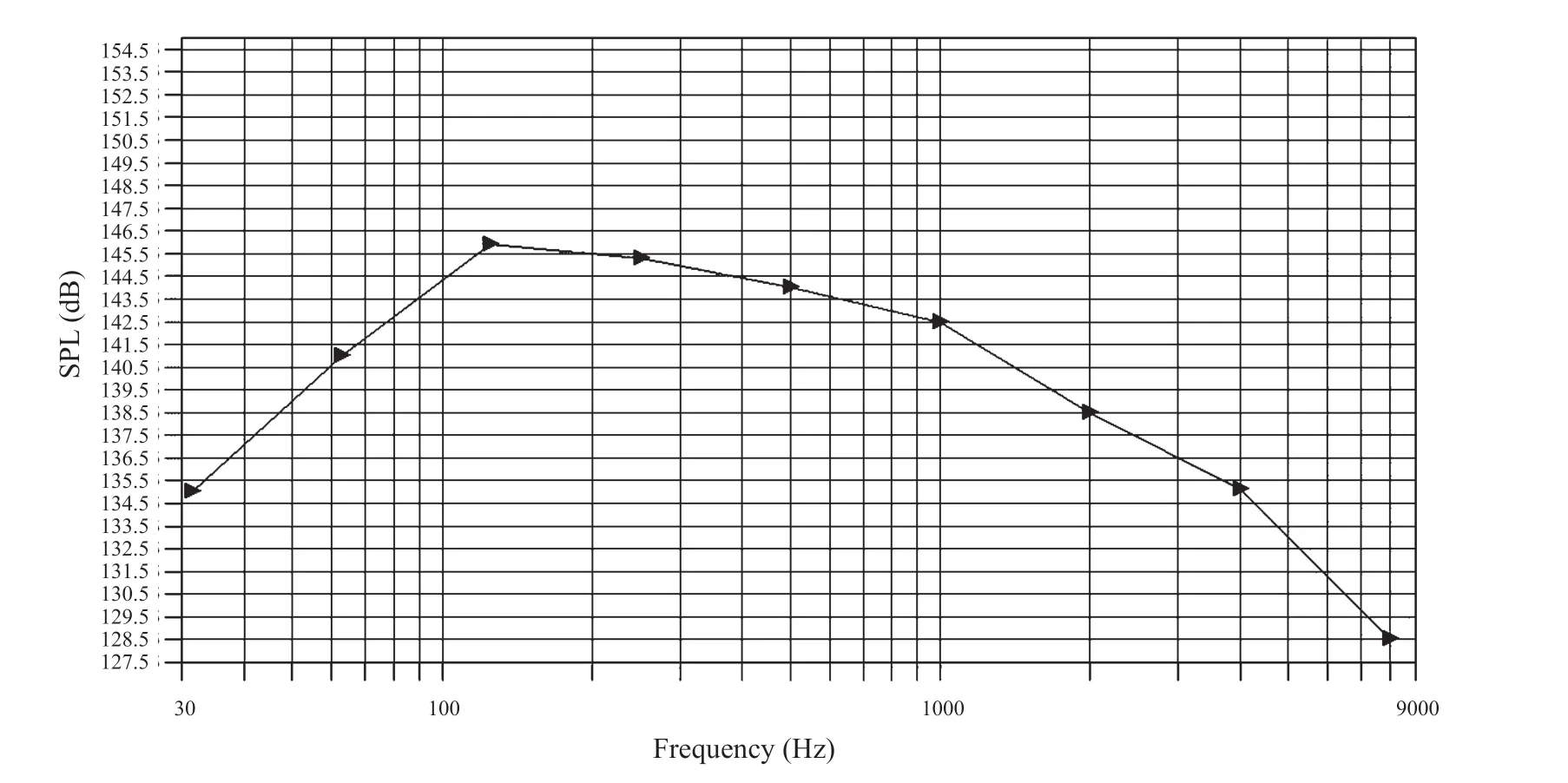
Figure 4 The external noise environment condition for the instrument cabin
3 MECHANICAL ENVIRONMENT OF THE EQUIPMENT IN THE INSTRUMENT CABIN
In order to evaluate the mechanical environment of the equipment within the instrument cabin under the acceptance condition for the external noise environment,the acoustic and vibration transfer relationship was established based on the response data measured in the noise test of reverberation room.
The noise test was conducted in a reverberation chamber for the instrument cabin.The test product was placed in a vertical state in the center of the laboratory.The rubber spring was connected with the lower sealing plate for elastic support,and the cover plate was connected with the product using the fixture.
In the noise test in the reverberation chamber for the instrument cabin,the control condition for the noise in the instrument cabin is set as a SPL of 142 dB,and then an external SPL was applied at 153.6 dB as shown in Table 6.
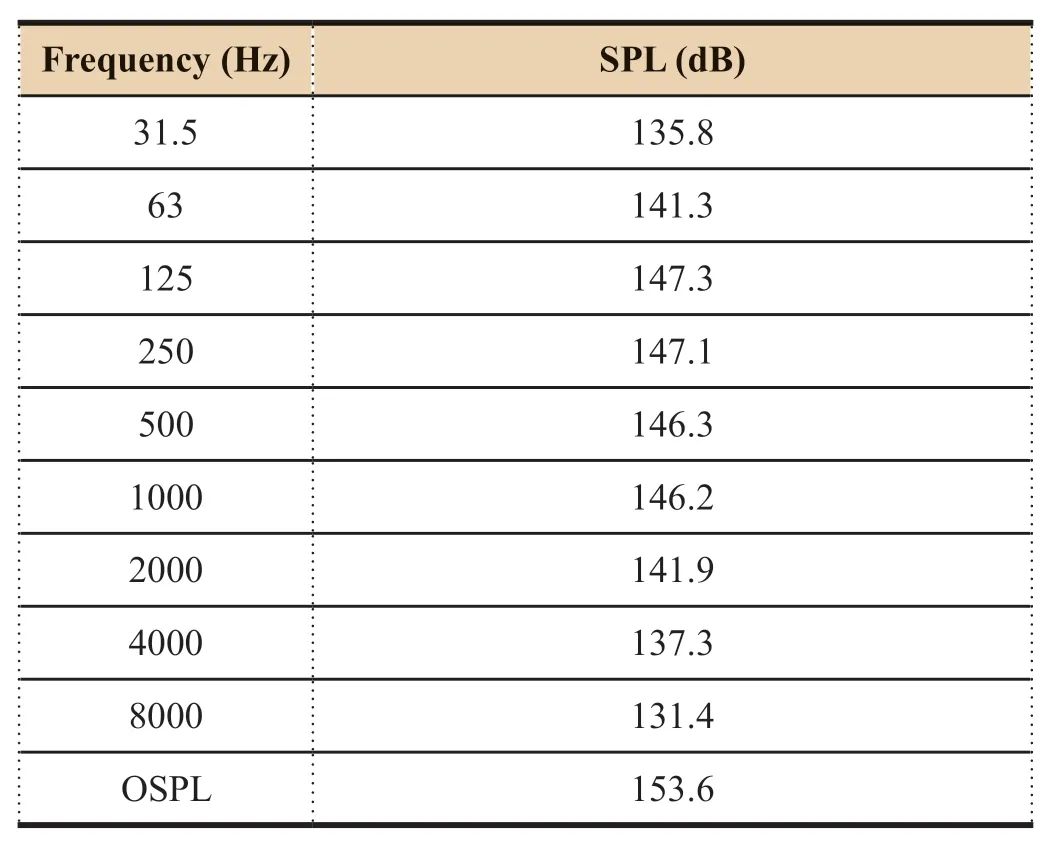
Table 6 The reverberation chamber noise test condition for the instrument cabin
At present the noise test of the instrument cabin was implemented in the reverberation chamber,and the vibration response of the equipment was obtained.From this the transfer function from the load spectrum to the equipment response could be obtained as:

The transmissibility of the equipment for each test point is shown in Figures 5 and 6.
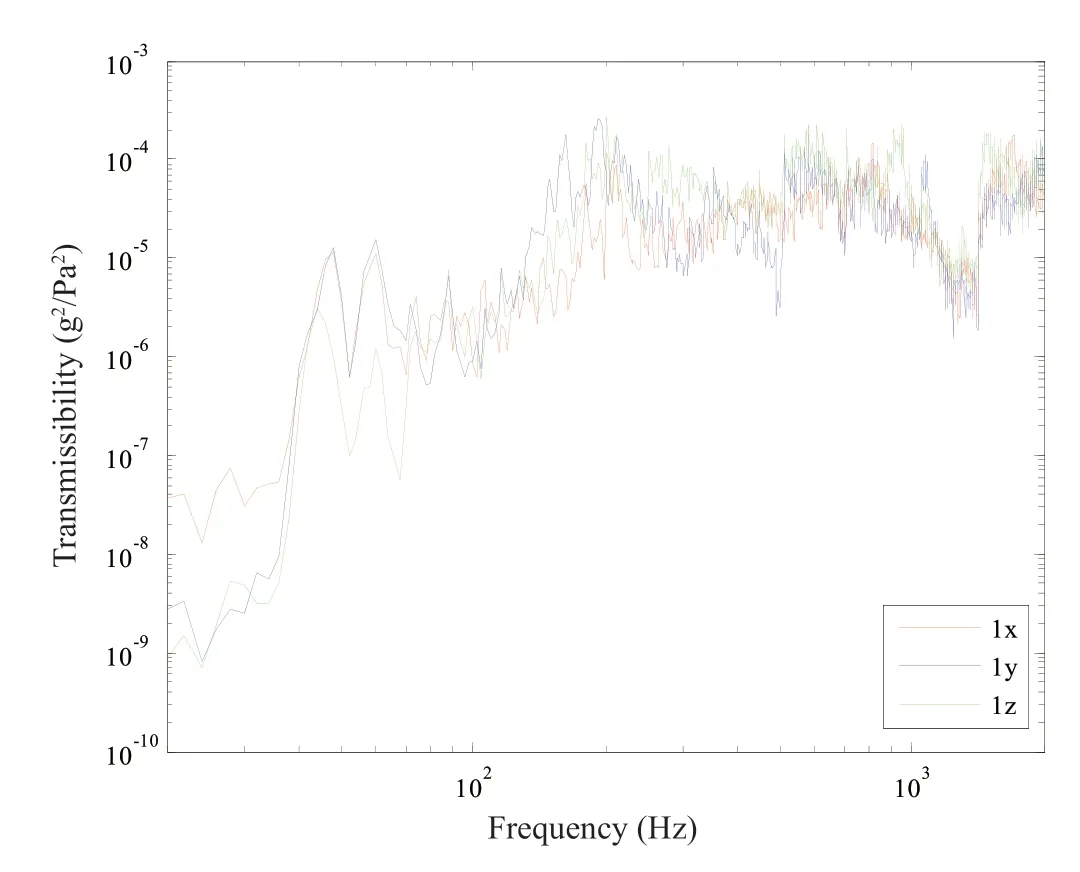
Figure 5 Test position 1
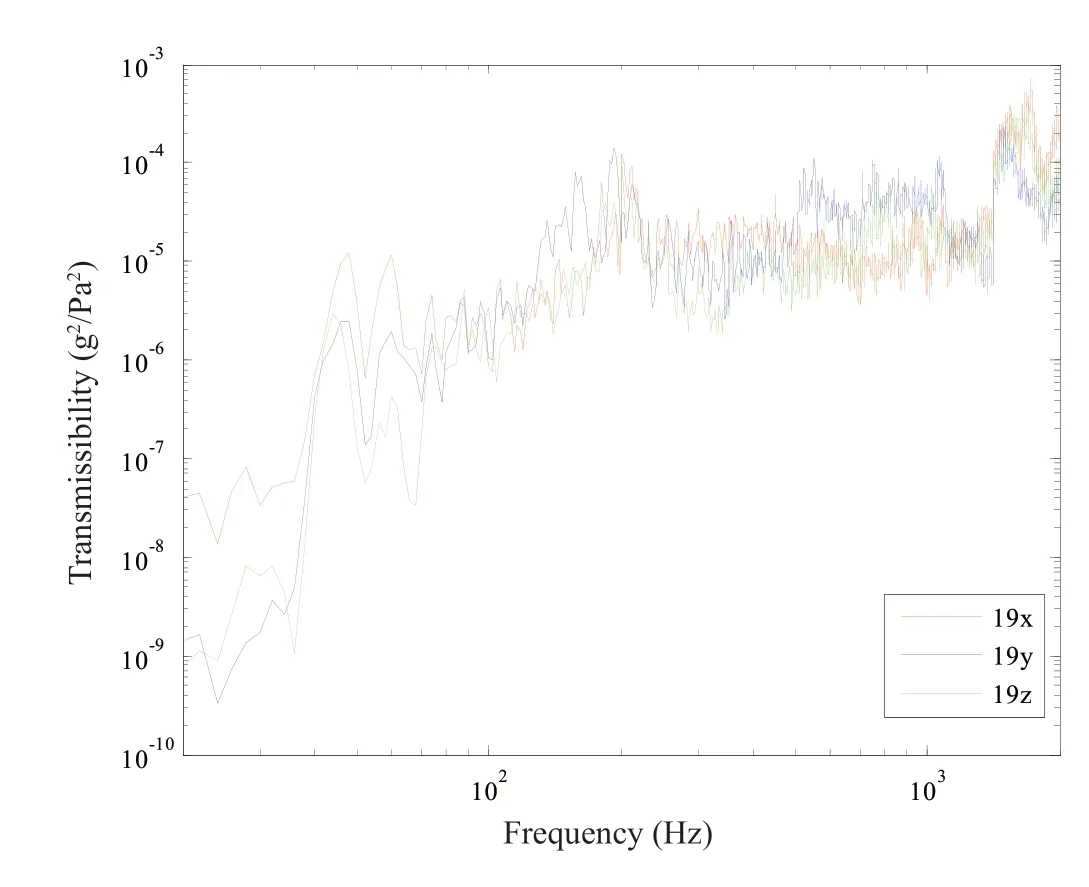
Figure 6 Test position 19
Now with the external noise condition of the instrument cabin determined as in Chapter 2 and the above transmissibility,the vibration response of the equipment in the instrument cabin under this noise environment could be obtained.The resultant power spectrum of the vibration response for the equipment was computed as shown in Figures 7 and 8.
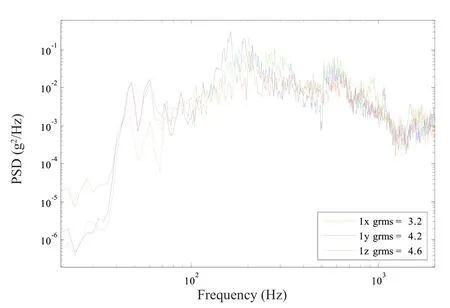
Figure 7 Test position 1
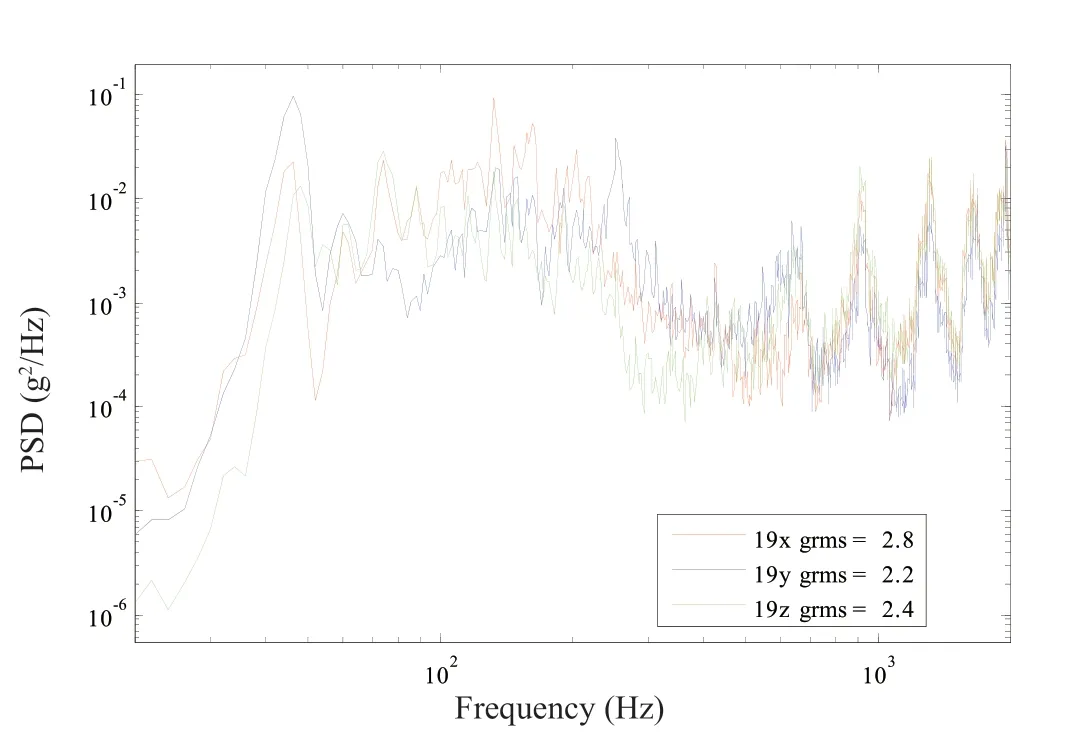
Figure 8 Test position 19
4 CONCLUSIONS
Different modules were designed,and combined to form a new type of launch vehicle.In this paper,based on multi-source data such as the ground test data and flight test data,the sound and vibration environments of the instrument cabin could be conveniently predicted for the new type of launch vehicle by extrapolation of similar models.
1) The lift-off noise of the instrument cabin obtained from the measured data of the existing launch vehicle was 152 dB.According to the interior noise condition for the existing instrument cabin,the SPL of the instrument cabin for the new launch vehicle was 152 dB.While the noise pressure level outside the instrument cabin was 152.1 dB based on the empirical formula.Then based on all the above data,the external noise environment condition of the instrument cabin for the new type of launch vehicle was set as 152 dB.
2) The acoustic and vibration transfer relationship was established based on the response data measured in the noise test of reverberation room.Then with the external noise environment condition of the instrument cabin and the transmissibility,the vibration response of the equipment in the instrument cabin under this noise environment was obtained.
- Aerospace China的其它文章
- Artist’s Concept of Tianwen 1’s Brake and Captured by Mars
- Kinetic Laws of Heating Initiated Reactions for Materials in Aerospace Applications
- Design and Kinematics Analysis of Support Structure for Multi-Configuration Rigid-Flexible Coupled Modular Deployable Antenna
- Design of Optical System for Small Long-Life Star Sensor
- In-situ Lunar Penetrating Radar Experiments on the Moon of CE-3 and CE-4 Missions
- Principle Prototype of a Recovery Launch Vehicle with Vertical Take-Off and Landing

